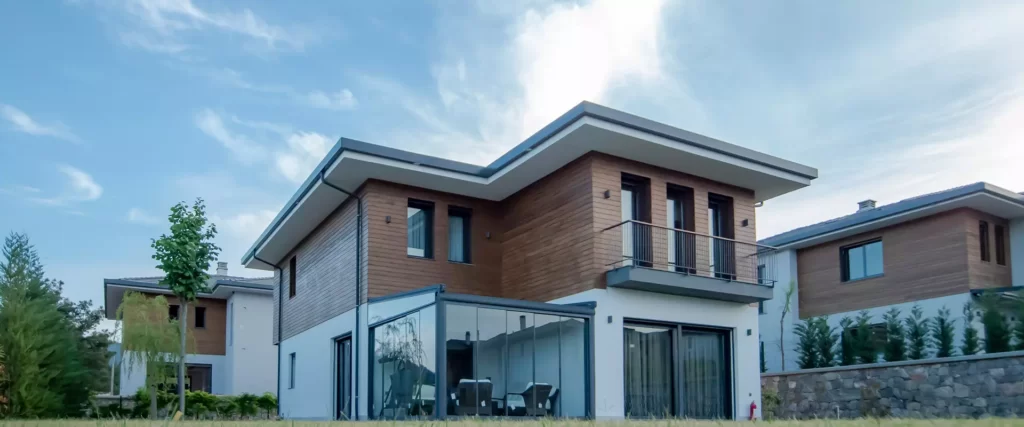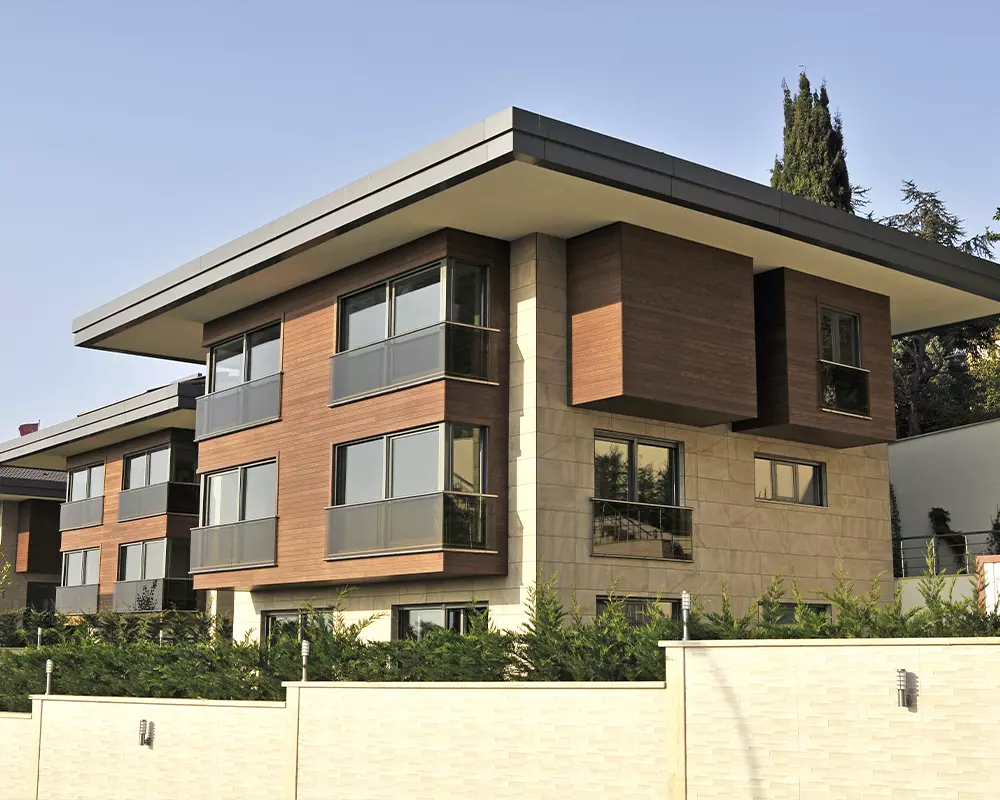The modern architecture industry is embracing sustainability as more than just a trend; it’s now an imperative. Leading the green revolution is sustainable cladding, a practice that combines aesthetic appeal with environmental responsibility. This article explores the world of sustainable cladding, including its benefits, types, and implementation in the construction industry.
Understanding Sustainable Cladding

Sustainable cladding refers to the application of external building materials that are environmentally-friendly, durable, and energy-efficient. It’s a critical component in green building that creates a protective layer that contributes to the overall energy efficiency and ecological footprint of structures.
Modern Challenges and Considerations: Shifting to Sustainable Cladding
Navigating the complexities of eco-friendly construction presents its own challenges. Here are a few of the biggest:
Sustainability
One primary concern when sourcing sustainable cladding is ensuring the materials used to make it are truly sustainable. The best way to do this is to keep in mind the material’s embodied C02 emission—or the total amount of C02 it emits over its lifecycle, from extraction, manufacturing, transportation, construction, installation, and disposal.
In other words, before deciding on a material to use, architects, builders, and buyers need to consider:
- How environmentally-friendly the materials are in their composition and production
- How much emissions are created through the manufacturing processes of cladding materials to ensure they align with sustainability standards.
- The amount of emissions created through the transportation and supply chain logistics of the materials
- The methods of product distribution, installation, ad disposal, and the amount of emissions released during each process
Economic Considerations
Balancing the upfront costs of sustainable cladding with its long-term benefits is important. Eco-friendly materials often come with a higher initial cost compared to traditional options. However, these costs can be recovered over time through energy savings, reduced maintenance, and the durability of the materials.
Changing Regulations
Regulatory compliance and building codes can also be challenging. It is crucial to ensure that sustainable cladding materials meet all local and national building standards. It requires staying updated on evolving regulations regarding sustainability and environmental impact in the construction sector.
The Benefits of Sustainable Cladding
Environmental Benefits
Climate Positive Carbon Footprint
Sustainable cladding materials, such as thermally modified wood, often have a lower carbon footprint in their production and transportation, which contributes to reduced greenhouse gas emissions.
Here’s how it works: When trees grow, they continuously take C02 out of the atmosphere, and when trees are harvested for cladding materials, they imprison the carbon dioxide in their cells and limit the carbon dioxide in the air.
As a result, the total amount of carbon dioxide trapped inside the wood’s cellular structure during the time of the tree’s growth is greater than what was used to enhance the wood with heat and steam, transport the lumber to distributors, and install the lumber as siding altogether, leading to a climate positive carbon footprint.
Plus, when the wood is ready to be repaired it can be recycled—again limiting the carbon emissions created unlike other sustainable cladding disposal processes.
Conservation of Natural Resources
Sustainable cladding comes from plantation forests and has a proper harvest-management cycle of 7-10 years.
No harm is being done to the soil, no natural resources are being explored. We only take the trees we plant for the purpose of generating a sustainable business model.
Cost-Effectiveness
Long-term Savings
Durable materials require less frequent replacement and maintenance which leads to cost savings over the building’s life cycle, which can be more than 30 years.
Low Maintenance Requirements
Many sustainable cladding options need minimal upkeep, usually just requiring to be oiled and sealed once a year, which saves time and resources.
Sustainable Style Choices
Design Variety
Sustainable cladding comes in various textures, colors, and finishes, which allows architects and builders to achieve diverse design aesthetics.
Thermally Modified Wood vs. Other Sustainable Cladding Materials
The choice of cladding material significantly influences a building’s environmental impact. Let’s explore sustainable options in wood, metal, and stone, each offering its own unique advantages:
Thermally Modified Wood Cladding

Wood cladding is a classic and sustainable choice that provides natural beauty and environmental benefits. Among various wood types, thermally treated wood stands out for its eco-friendly attributes and can be used as the main component or accents for contemporary housing designs.
Thermally treated wood: This material undergoes a specialized heat treatment process to improve its resistance to decay and moisture without harmful chemicals. Thermowood is valued for its durability and minimal environmental footprint.
Metal Cladding

Metal, including options like aluminum and steel, is renowned for its durability, recyclability, and modern aesthetics, which could last a lifetime. However, the C02 emissions needed to produce these materials outweighs the lifecycle of the product—especially when it’s compared to the process of producing thermally modified wood.
Stone Cladding

Although stone cladding, incorporated with materials like brick and cultured stone, can create a look of natural elegance with robust durability, the process of transporting heavy materials such as stone creates large amounts of carbon emissions that could be avoided with a better option, such as thermally modified wood.
Brick Cladding

Brick, known for its thermal properties and natural composition, offers sustainability through its energy efficiency and recyclability. Yet, brick has a tendency to crack and break, requiring replacements. Unlike brick, thermally modified, sustainable cladding has a net positive carbon footprint during its lifecycle.
Concrete Cladding

Similar to brick and stone, although the longevity makes it a viable sustainable option, it also requires an increased amount of emissions to transport, create, and install, whereas thermally modified wood has net positive emissions.
The Future of Sustainable Cladding

As the construction industry evolves, sustainable cladding continues to play a pivotal role. Innovations in materials and techniques are expected to enhance the sustainability and performance of cladding systems to pave the way for more eco-conscious buildings.
Leading the way in sustainable cladding—and creating a path for the future—are three categories of thermally modified wood:
- Thermally Modified Ash: Strong and aesthetically pleasing, Thermo Ash is a popular choice for both residential and commercial applications.
- Thermally Modified Pine: Known for its classic appeal, Thermo Pine offers improved durability in order to fit various architectural styles.
- Thermally Modified Ayous: Lightweight yet durable, Thermo Ayous is preferred for its smooth texture and consistent appearance.
Using such sustainable cladding options is not just a stylish choice; it’s a commitment to environmental stewardship and responsible construction. By embracing eco-friendly cladding solutions, we can contribute to a more sustainable future, one building at a time.


